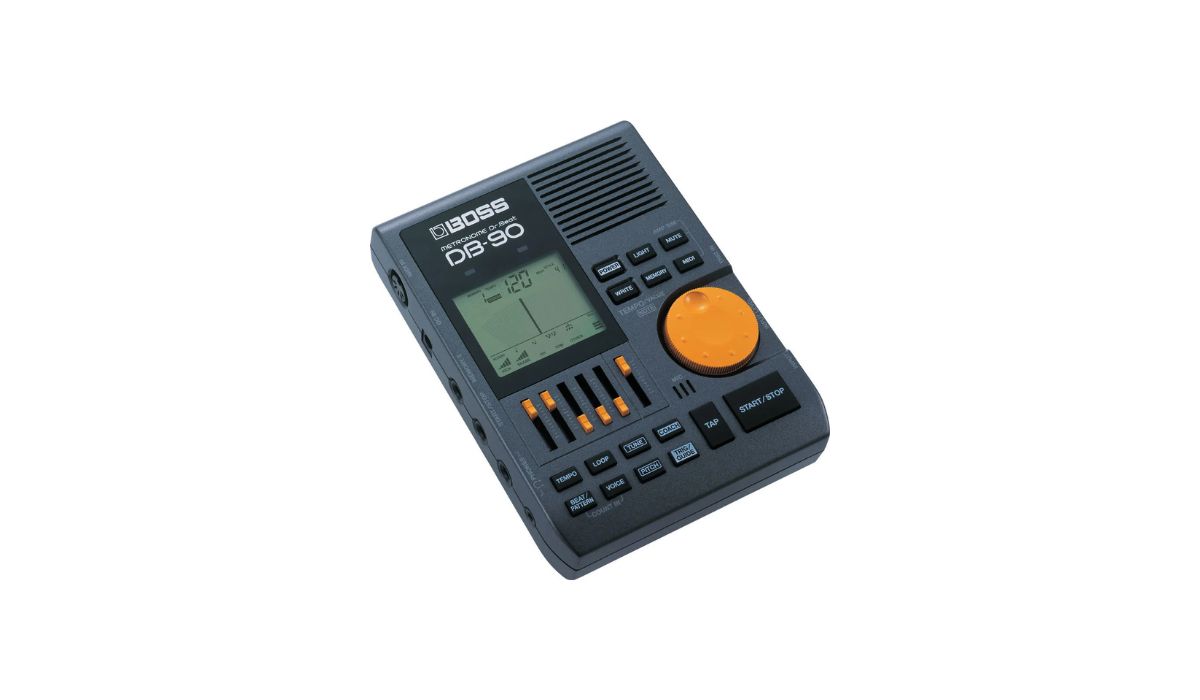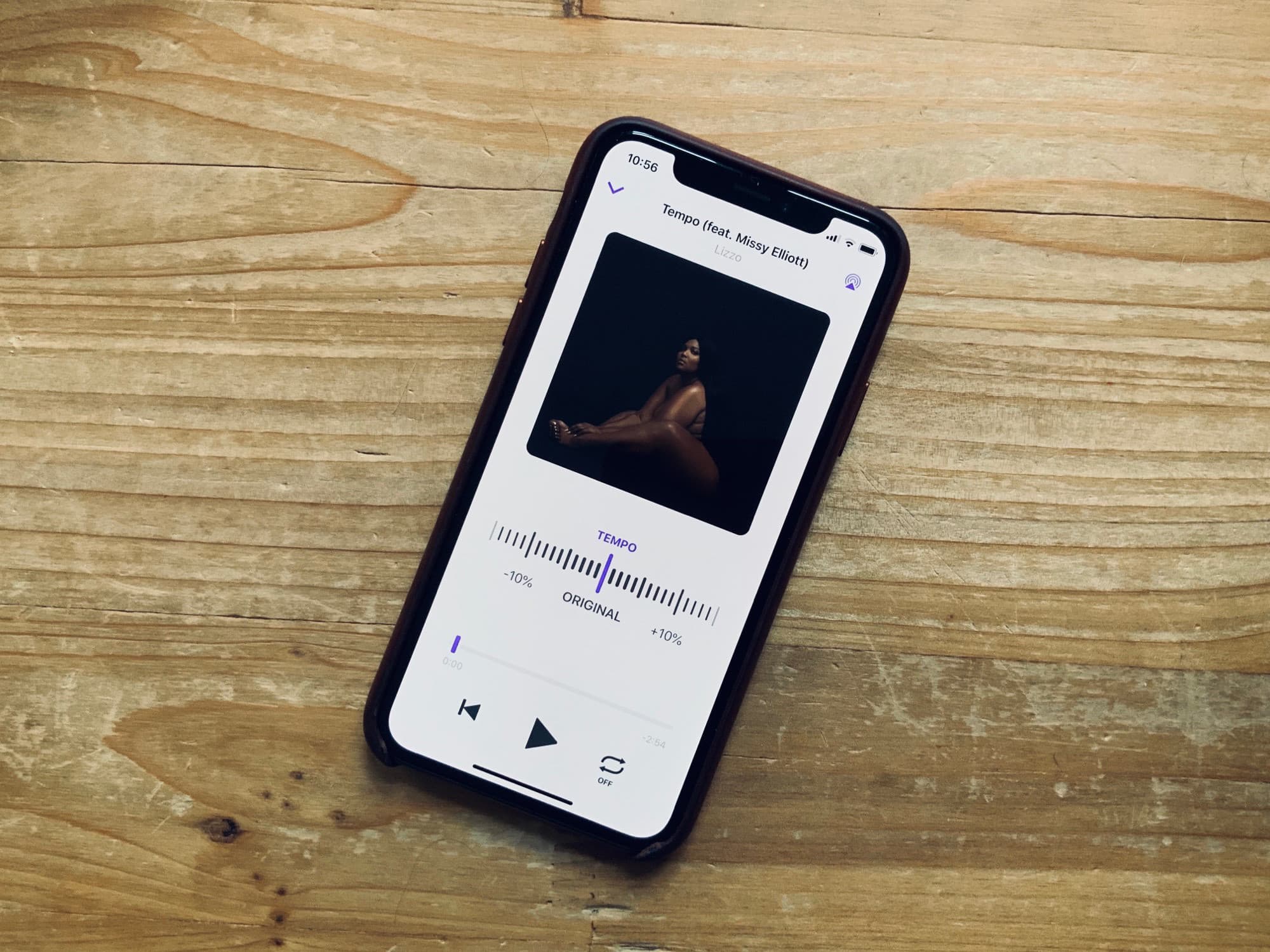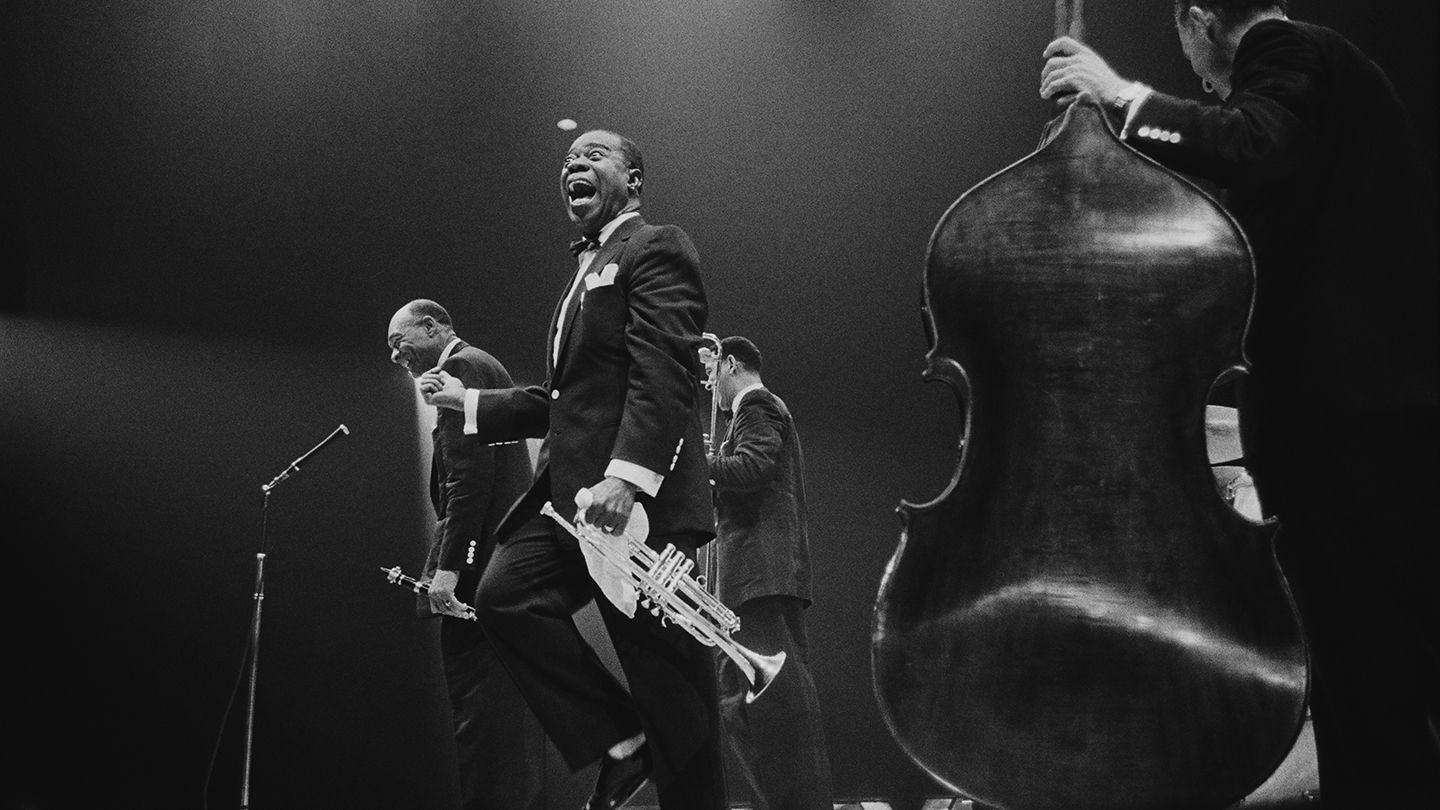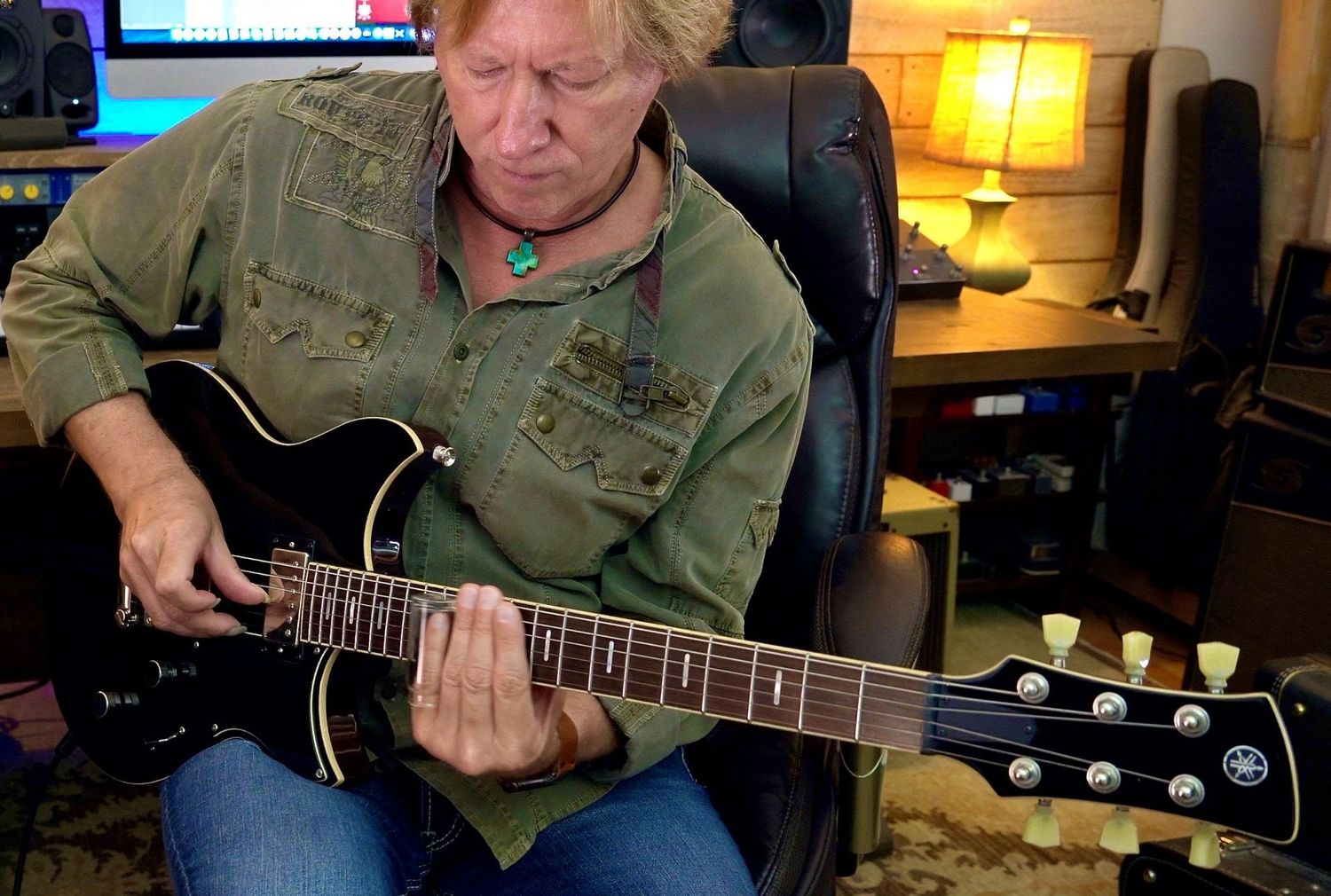Home>Production & Technology>Metronome>What Is A Tap Tempo Metronome


Metronome
What Is A Tap Tempo Metronome
Published: January 13, 2024
Discover what a tap tempo metronome is and how it can improve your musical timing. Find the perfect metronome for your needs and start keeping in perfect rhythm.
(Many of the links in this article redirect to a specific reviewed product. Your purchase of these products through affiliate links helps to generate commission for AudioLover.com, at no extra cost. Learn more)
Table of Contents
Introduction
Imagine trying to play a musical instrument without any sense of rhythm or timing. It would be nearly impossible, right? That’s where a tap tempo metronome comes in. Whether you’re a musician, dancer, or simply someone who wants to improve their sense of timing, a tap tempo metronome can be an invaluable tool.
But what exactly is a tap tempo metronome? How does it work? And what are the benefits of using one? In this article, we’ll explore the ins and outs of tap tempo metronomes, uncovering their various types and providing helpful tips for their effective use.
A tap tempo metronome is a device or software application that helps musicians maintain a steady beat by producing a series of regular ticks or beeps. Unlike traditional metronomes with fixed tempos, a tap tempo metronome allows the user to set the tempo by tapping a button or pad in time with the desired beat. This allows for a more intuitive and personalized experience, ensuring that the metronome matches the musician’s desired tempo precisely.
Tap tempo metronomes are widely used by musicians of all levels, from beginners to professionals. They are particularly useful for practicing musical passages, improving timing accuracy, and developing a strong sense of rhythm. Additionally, tap tempo metronomes can be found in a variety of formats, from physical devices to smartphone apps, making them easily accessible for musicians on the go.
Many benefits come with using a tap tempo metronome in your musical practice. Firstly, it helps you develop a solid internal sense of rhythm and timing. By consistently practicing with a metronome, you can refine your ability to play in time and better understand different rhythmic patterns. This foundation is crucial for playing with other musicians, as it ensures that everyone stays in sync.
Secondly, a tap tempo metronome allows you to gradually increase the tempo as you improve. Starting at a slower tempo and gradually working your way up helps build dexterity, precision, and control. This incremental approach prevents rushing or stumbling over difficult passages and allows you to master challenging rhythms more effectively.
Lastly, using a tap tempo metronome can help you enhance your overall musicality and performance. It trains your ears to recognize and internalize different rhythmic patterns, making it easier to stay in time and perform more complex musical compositions. It also promotes a sense of discipline and focus, as you learn to maintain a steady beat throughout your practice sessions.
In the next sections, we’ll dive deeper into how tap tempo metronomes work, explore the different types available, and provide some useful tips for using them effectively. So, whether you’re a musician, dancer, or simply someone looking to improve their sense of timing, a tap tempo metronome is an essential tool that can take your rhythmic abilities to new heights.
Definition of a Tap Tempo Metronome
A tap tempo metronome is a device or software application that allows musicians to set the tempo by tapping a button or pad in time with the desired beat. Unlike traditional metronomes with fixed tempos, a tap tempo metronome offers a more intuitive and personalized experience, allowing musicians to establish their preferred tempo precisely.
The concept behind a tap tempo metronome is simple yet powerful. By tapping a button or pad at specific intervals, the musician sets the desired beats per minute (BPM) for the metronome. The metronome then generates a continuous and steady pulse that matches the selected tempo. This pulse can be heard as a series of clicks, beeps, or even visual cues, depending on the device or application used.
There are a few key advantages to using a tap tempo metronome. One of the main benefits is the ability to adjust the tempo on the fly, giving musicians more flexibility during practice or performance. Whether you need to speed up or slow down the tempo, a tap tempo metronome allows for quick and easy adjustments to match your needs.
Another advantage of using a tap tempo metronome is its versatility across different musical genres and styles. Whether you’re playing classical music, jazz, rock, or any other genre, you can set the metronome to the specific tempo required for the piece you’re working on. This ensures that you maintain a consistent and accurate sense of timing throughout your practice sessions.
Tap tempo metronomes are available in various forms, ranging from physical devices to mobile apps and computer software. Some metronomes are standalone devices specifically designed for musicians, while others are built into music software or applications for smartphones and tablets. The availability of tap tempo metronomes in digital formats has made them highly accessible and convenient for musicians, regardless of their location.
Overall, a tap tempo metronome is an essential tool for any musician looking to improve their sense of timing and develop a strong rhythmic foundation. By allowing for precise tempo adjustments and catering to a wide range of musical styles, tap tempo metronomes empower musicians to enhance their skills and bring flawless rhythmic precision to their performances.
How Tap Tempo Works
The concept of tap tempo is relatively straightforward, yet its implementation can vary depending on the device or software used. At its core, tap tempo allows musicians to set the tempo of a metronome by tapping a button or pad in time with the desired beat. Let’s explore how tap tempo works in more detail.
When using a tap tempo metronome, the musician typically initiates the process by pressing a designated button or pad. With each tap, the metronome detects the interval between taps and calculates the average tempo based on these inputs. This average tempo is then used to generate a continuous series of clicks or beeps that align with the desired tempo.
One key feature of tap tempo is its adaptability. By tapping at different speeds, musicians can set the metronome to various tempos, ensuring that it matches the specific requirements of their musical piece or practice session. This adaptability makes tap tempo metronomes highly versatile across different musical genres and styles.
Most modern tap tempo metronomes provide additional features to enhance the user experience. For instance, some metronomes allow for adjusting the volume or accentuating the first beat of each measure. Others may include visual cues, such as flashing lights or a moving pendulum, to complement the audio cues and provide a visual representation of the tempo. These added features further contribute to the overall effectiveness and usability of the tap tempo metronome.
In recent years, the widespread use of smartphones and tablets has led to the availability of tap tempo metronome applications. These apps utilize the built-in accelerometer or microphone of the device to detect the tempo through finger taps or external audio input. This makes tap tempo metronomes even more accessible and convenient, as musicians can carry their metronome with them wherever they go.
It’s important to note that while tap tempo metronomes are valuable tools for establishing a consistent beat, they are not a solution to poor internal timing. Musicians should strive to develop a natural sense of rhythm and timing in addition to using a metronome. Therefore, tap tempo metronomes should be viewed as aids rather than crutches, helping musicians refine their timing skills and maintain a steady tempo.
Now that you have a better understanding of how tap tempo works, let’s explore the benefits of using a tap tempo metronome in the next section.
Benefits of a Tap Tempo Metronome
Using a tap tempo metronome offers several significant benefits for musicians of all levels. Whether you’re a beginner or an experienced player, integrating a tap tempo metronome into your practice routine can greatly enhance your musical skills. Let’s explore the key advantages of using a tap tempo metronome:
- Improved Timing and Rhythm: One of the primary benefits of using a tap tempo metronome is the development of a solid sense of timing and rhythm. Practicing with a metronome helps you internalize the pulse of the music and play with precision. By staying in sync with the metronome’s steady beat, you can refine your timing, prevent rushing or dragging, and produce a more polished musical performance.
- Consistency and Accuracy: A tap tempo metronome ensures that you maintain a consistent tempo throughout your practice sessions. It eliminates the tendency to speed up or slow down unintentionally, allowing you to play with greater accuracy. This consistency is essential when playing with other musicians or when performing in an ensemble, as it ensures everyone stays in sync.
- Incremental Progress: Many tap tempo metronomes allow you to gradually increase the tempo as you improve. Starting at a slower tempo and progressively working your way up helps build technical dexterity, control, and confidence. By gradually stepping up the speed, you can tackle more challenging passages without feeling overwhelmed, ultimately helping you master complex musical compositions.
- Enhanced Musicality: A tap tempo metronome helps you develop a keen ear for recognizing and internalizing different rhythmic patterns. As you practice with the metronome, you become more familiar with various rhythmic subdivisions and patterns. This increased awareness allows you to incorporate more complex rhythms into your playing, enhancing your overall musicality and ability to perform different styles of music.
- Discipline and Focus: Using a tap tempo metronome encourages discipline and focus during practice sessions. By adhering to a steady beat, you develop a sense of concentration and mental discipline, which can benefit other aspects of your musical journey. The metronome keeps you accountable and helps you stay on track, even when faced with challenging musical passages.
By taking advantage of these benefits, musicians can elevate their playing and achieve higher levels of musicianship. Whether you’re practicing scales, learning a new piece, or working on technical exercises, incorporating a tap tempo metronome into your routine can yield significant improvements in your timing, consistency, and overall musical performance.
In the next section, we will explore the different types of tap tempo metronomes available to suit your specific preferences and needs.
Different Types of Tap Tempo Metronomes
Tap tempo metronomes come in various forms and formats to cater to the diverse needs and preferences of musicians. Whether you prefer a physical device or a digital app, there’s a tap tempo metronome out there for you. Let’s explore some of the different types:
- Physical Metronomes: Traditional metronomes have been a staple in music practice rooms for decades. These physical devices consist of a pendulum or a rotating wheel that produces an audible click or tick at regular intervals. While old-fashioned, physical metronomes can still be found in music stores and offer a visual and auditory reference for tempo.
- Smartphone Apps: With the advent of smartphones, tap tempo metronomes have evolved into convenient and highly accessible apps. These apps utilize the built-in accelerometer or microphone of the device to detect finger taps or external audio inputs. They often provide additional features, such as adjustable volume, visual cues, and the ability to save and recall tempos for different musical pieces.
- Computer Software: For musicians who prefer working on their computers, there are tap tempo metronome software applications available. These programs offer additional features and customization options and can be integrated into digital audio workstations (DAWs) or music notation software. They provide a comprehensive and versatile metronome experience for musicians working in a digital environment.
- Virtual Metronomes: Virtual metronomes are web-based or standalone applications that can be accessed through a computer or mobile device. These metronomes often have customizable features like different sounds, subdivisions, and visual cues. They offer the flexibility of adjusting the tempo and creating personalized metronome settings to suit individual preferences.
- Multifunctional Devices: Some metronomes come as part of multifunctional devices, such as digital tuners or rhythm trainers. These devices combine the functionality of a metronome with other useful tools for musicians, including tuning capabilities, rhythm exercises, and programmable presets to practice complex musical patterns.
When selecting a tap tempo metronome, consider factors such as portability, features, and ease of use. Physical metronomes are suitable for musicians who prefer a tactile and traditional experience, while smartphone apps and computer software offer convenience and versatility. It ultimately comes down to personal preference and the specific needs of your musical practice.
Whether you choose a physical metronome, a smartphone app, or a computer software, incorporating a tap tempo metronome into your practice routine will significantly enhance your timing and rhythmic abilities. Explore the different types available in the market and find the one that best suits your musical journey and practice requirements.
In the next section, we will provide valuable tips for effectively using a tap tempo metronome in your practice sessions.
How to Use a Tap Tempo Metronome
Using a tap tempo metronome effectively involves more than simply pressing a button and playing along. To get the most out of this valuable tool, it’s important to follow some guidelines and develop good practice habits. Here are some steps to help you use a tap tempo metronome effectively:
- Select a Suitable Metronome: Consider the type of metronome that best suits your needs – whether it’s a physical device, smartphone app, or computer software. Choose a metronome that provides the necessary features and functionality for your practice sessions.
- Familiarize Yourself with the Controls: Spend some time getting acquainted with the controls and settings of your chosen metronome. Understand how to adjust the tempo, choose different sounds or accents, and access any additional features that may be available.
- Set Your Desired Tempo: Determine the tempo you want to practice at and set it on the metronome. If using a tap tempo metronome, tap the button or pad in time with the desired beat to set the tempo. Pay attention to the metronome’s response and make any necessary adjustments to ensure it matches your intended tempo accurately.
- Start With a Comfortable Tempo: If you’re new to using a metronome or practicing with one, it’s recommended to start with a comfortable tempo. This allows you to establish a solid foundation and focus on playing accurately within the given tempo.
- Play Along with the Metronome: Once the metronome is set, start playing your instrument or performing your routine exercises along with the metronome’s beat. Concentrate on staying in sync with the metronome and playing precisely in time with each click or beep.
- Focus on Accuracy: While playing along, prioritize accuracy over speed. Strive to execute your music or exercises with precision and maintain a consistent rhythm. This will help build a solid foundation and strengthen your sense of timing.
- Gradually Increase the Tempo: As you become more comfortable and proficient at the current tempo, gradually increase the speed. Use the metronome to challenge yourself and push your limits, but always maintain control and accuracy.
- Experiment with Subdivisions: Many tap tempo metronomes offer options for different subdivisions, such as eighth notes, triplets, or sixteenth notes. Experiment with these subdivisions to improve your ability to play complex rhythmic patterns with precision.
- Practice Different Musical Styles: Utilize the tap tempo metronome to practice various musical styles and genres. Experiment with different tempos and rhythmic feels, such as swing, shuffle, or straight eighth notes. This will help develop your versatility and adaptability as a musician.
- Record and Evaluate Your Progress: Consider recording your practice sessions and performances using the tap tempo metronome. This allows you to listen back and evaluate your timing accuracy and overall musicality. Use these recordings as a feedback tool to identify areas for improvement.
By incorporating these steps into your practice routine, you can effectively utilize a tap tempo metronome to improve your timing, rhythm, and overall musical performance. Embrace the metronome as a tool for growth and enjoy the benefits it brings to your musical journey.
In the next section, we will provide some valuable tips to help you use a tap tempo metronome even more effectively.
Tips for Using a Tap Tempo Metronome Effectively
While using a tap tempo metronome is a powerful tool for improving your timing and rhythm, there are some additional tips and techniques you can employ to ensure you get the most out of your practice sessions. Consider the following tips for using a tap tempo metronome effectively:
- Start Slow: Begin practicing at a slower tempo than you think you can handle. This allows you to focus on accuracy and precision and gradually build up your speed as your skills improve.
- Subdivide the Beat: Utilize the metronome’s subdivision feature to emphasize different rhythms and subdivisions within a beat. This will help you develop a strong sense of timing and internalize different rhythmic patterns.
- Vary the Dynamics: Experiment with playing louder or softer in different sections while staying in time with the metronome. This will help develop control and dynamic expression in your playing.
- Practice with Different Articulations: Use the metronome to practice different articulations, such as staccato, legato, or accents. This will enhance your ability to execute various playing techniques with precision.
- Play Along with Recordings: Incorporate recordings of your favorite songs or musical pieces into your practice sessions. Use the tap tempo metronome to play along and match the tempo of the recording, allowing you to practice playing in sync with other musicians.
- Use a Visual Metronome: If available, try using a metronome with visual cues, such as a flashing light or a moving pendulum. Visual cues can enhance your sense of timing and provide additional reinforcement during practice.
- Practice in Different Time Signatures: Challenge yourself by practicing in different time signatures using the tap tempo metronome. This will sharpen your ability to adapt to different rhythmic feels and musical contexts.
- Experiment with Offbeat Patterns: Create exercises that incorporate offbeat patterns, syncopation, or polyrhythms. This will improve your ability to stay in time and add complexity to your playing.
- Focus on Subtleties: Pay attention to the subtle nuances of the metronome’s clicks or beeps. Listen for any variations in volume, attack, or decay, and strive to match those nuances in your playing. This attention to detail will help refine your sense of timing.
- Take Breaks: It’s essential to give yourself breaks during practice sessions. Use these breaks to rest and reset, allowing your mind and body to rejuvenate. This will help maintain focus and prevent mental fatigue.
Remember, using a tap tempo metronome is not just about playing mechanically in time with the beat. It’s about developing a keen sense of rhythm, precision, and musicality. Embrace these tips as you integrate the metronome into your practice routine, and you’ll witness significant improvements in your timing and overall musical performance.
As we conclude this article, it’s important to remember that while a tap tempo metronome is an incredibly valuable tool, it is just one aspect of your musical practice. Balancing your metronome usage with creativity, expression, and exploration of musicality is key to becoming a well-rounded musician.
So, embrace the tap tempo metronome as your rhythmic guide and embark on the journey of refining your timing, enhancing your musicality, and becoming a more confident and dynamic performer. Happy practicing!
Conclusion
A tap tempo metronome is a powerful tool that can greatly benefit musicians of all levels. Whether you’re a beginner or an experienced player, incorporating a tap tempo metronome into your practice routine can enhance your timing, rhythm, and overall musical performance.
In this article, we explored the definition of a tap tempo metronome and how it works. We discussed the various benefits of using a tap tempo metronome, including improved timing and rhythm, consistency and accuracy, incremental progress, enhanced musicality, and the development of discipline and focus.
We also delved into the different types of tap tempo metronomes available, such as physical metronomes, smartphone apps, computer software, virtual metronomes, and multifunctional devices. Each type provides unique features and advantages to cater to the diverse needs and preferences of musicians.
Furthermore, we provided valuable tips on effectively using a tap tempo metronome, such as starting slow, subdividing the beat, varying dynamics and articulations, and practicing with recordings. These tips will help you maximize the benefits of using a tap tempo metronome and ensure that your practice sessions are productive and rewarding.
Remember, using a tap tempo metronome is not meant to restrict your creativity or musical expression. It is a tool to help you develop a strong rhythmic foundation, refine your timing, and enhance your musicality. Balance your metronome usage with exploration, interpretation, and experimentation to become a well-rounded musician.
So, whether you’re a musician aiming to improve your instrumental skills, a dancer looking to sharpen your sense of rhythm, or simply someone seeking to enhance your overall timing abilities, a tap tempo metronome is an invaluable tool on your journey towards musical excellence.
Embrace the power of the tap tempo metronome, integrate it into your practice routine, and unlock your full rhythmic potential. With dedication, discipline, and the guidance of this versatile tool, you can elevate your musical performance to new heights.











